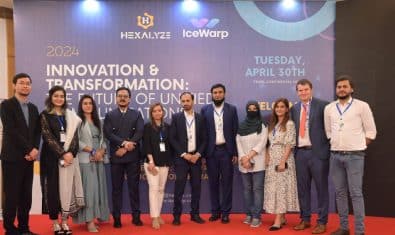Pakistan is the least ready country for digital education among the developing member countries (DMCs) of the Asian Development Bank (ADB).
The Bank in its report “Toward mature digital education ecosystems, the Digital Education Readiness Framework”, highlighted that Pakistan’s major areas for improvement include its low internet connectivity (just 34.1 percent of households are connected), low fixed broadband speeds, high fixed line broadband costs, and low rural electricity access.
Relative to the model country, Uzbekistan is the most prepared country for digital education, followed by Indonesia. The least ready country is Pakistan, followed by Fiji. Across all five pillars, countries perform relatively the lowest in the Providers pillar, with six of the 10 DMCs in the “initial” category of readiness—Cambodia, Bangladesh, the Kyrgyz Republic, Mongolia, Pakistan, and Fiji (ordered from highest to lowest score). The other four countries are in the “emerging” category of readiness (Indonesia, the Philippines, Viet Nam, and Uzbekistan).
The difference between the model country’s normalized score and the highest-scoring country’s score is almost 45 points. The 10 DMCs fare quite well in keeping their mobile broadband costs to a low percentage of GNI per capita, but fixed broadband costs differ across the board. While Cambodia, Indonesia, and Pakistan are the least affordable in broadband costs, Bangladesh, Mongolia, and Uzbekistan are the most affordable.
Most countries perform well on urban electricity access, with 100 percent or almost 100 percent of urban households having access to electricity. The 10 DMCs range between 90 percent and 100 percent in rural electricity access. Pakistan lags relatively behind, with 41.3 percent of rural households having no access to electricity
With the average share of households with TV being 81.7 percent, most countries do relatively well on this parameter. The share of cable TV subscriptions per 1,000 individuals varies between low and moderate in the countries under study. Pakistan has the highest subscription rate among all countries for which data is available.
Although Pakistan’s household TV coverage rate is at the lower end, at 62.8 percent, it surpasses all countries in its cable TV subscriptions coverage (with over 482 subscriptions per 1,000 persons). Among its various initiatives, the Government of Pakistan has developed “Open Courseware” that serves as an online repository of course material for university students.
Pakistan’s National Education Policy 2017–2025, published in 2017 by the Ministry of Federal Education and Professional Training, notes the following: (i) provision of access to ICT in schools, (ii) use of ICT to strengthen quality of teaching and enhance student learning, (iii) development of complementary approaches to ICT in education, (iv) building on best practices in existing ICT programs, and (v) development of the capacity of education departments as part of its ICT policy objectives. However, the scope of access to devices is not elaborated in the policy.
One of the key areas of the policy is the “revision of curriculum and teacher training system, both pre-service and in-service, to make it learner-centered and IT-based. Nonetheless, there is no mention of a digitized curriculum.
The government has implemented a number of initiatives—largely as a response to the pandemic— to provide large-scale access to digital content. One such initiative is the “TeleSchool,” which includes “educational programmes broadcasted on television across the country to support distance learning for students from grades 1–12, focusing on Mathematics, English, Urdu, and Science subjects.”
According to the survey results, there is an absence of teacher training in ICT skills, with a focus on delivering online education. One of the experts interviewed noted that the few training programs that exist focus on training teachers on how to use IT tools, but not so much on creating or delivering content.
While most teachers confirmed that they also create educational content themselves, the format of the content is largely basic, covering documents and presentations. In terms of Internet quality, teachers in schools are able to use the Internet for most functions including browsing videos, consuming audio and video content, and downloading documents. The Internet, however, is less suitable for downloading heavier content, including audio clips and videos. Higher education and TVET teachers reported comparatively high Internet quality for all functions.
When examining institutional support available to teachers in delivering online education, there is marked room for improvement in schools. Most schools use paper-dependent systems for data collection and analysis. Moreover, most teachers in schools reported not receiving IT support for troubleshooting hardware and software issues. Teachers in higher education and TVET, however, seem to have such support readily available
The majority of students in Pakistan’s primary and secondary schools, higher education, and TVET institutions are reasonably proficient in a variety of digital skills, including more basic ones (like using communication tools, storing and organizing files, and finding information on the Internet) to more advanced ones (such as using productivity applications and collaborative tools). The majority of students at all levels are self-taught in using the tools required for digital learning, with the share of teachers in higher education confirming this as being the highest. Students’ device access at home is below par: less than half of students at the primary and secondary school, higher education, and TVET levels have access to a computer or laptop at home. In terms of TV access, the survey reflects a similar proportion. On the other hand, smartphone access is high.
Less than 30 percent of teachers at the primary and secondary school, higher education, and TVET levels in Pakistan conduct classes using private EdTech platforms. Similarly, the use of these platforms for communicating and/or sharing with students is very low, with none of the teachers in the primary and secondary schools reportedly using them. Among all 10 DMCs, Pakistan has one of the lowest shares of ICT graduates from the total pool of tertiary education graduates (1.1 percent).
Pakistan is a partner state to the Global Partnership for Education (GPE). According to the GPE report on progress on grant usage by Sindh and Balochistan regions from October 2020, “through a $66 million GPE grant, the Sindh Province used tech tools to ensure teachers were deployed to the areas where they were most needed” while “in Balochistan, apps keep track of teacher attendance, recording when teachers are within a certain geo-radius of the school; they work offline in more remote areas, uploading information when there is network access”. It also notes that the grant money is leading to an “ambitious distance learning scheme being rolled out across Pakistan.”





















